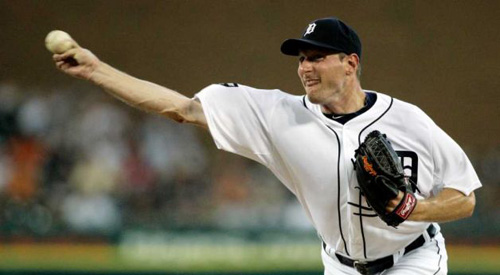
Polished Progression: The subtle rise of Max Scherzer
When the Detroit Tigers dealt Curtis Granderson to the Yankees in a three-team trade for Austin Jackson and Phil Coke in 2009, the fact that they also picked up Max Scherzer from the Diamondbacks often gets overlooked.
At the time of the trade, Scherzer was coming off of his first full season as an MLB starter with a 4.12 ERA and 174 strikeouts in 170.1 innings. It was a promising season for the young right-hander – considering he spent 2008 flipping between the rotation and bullpen – but he still had a lot of work to do to in order to establish continued success.
When Scherzer neared the end of his first season in Detroit in 2010, though, he looked like a completely different pitcher than during his time in Arizona, and the numbers proved it.
On top of throwing 31 starts as an innings-eater last season, Scherzer allowed less runs than he did the year before, despite tossing 25 more innings. He was also allowing fewer hits per nine innings and getting significantly more hitters to swing at pitches outside the strike zone resulting in easy outs for his team and a boost to his infield fly ball percentage
Together it resulted in a season wherein he finished with a 3.50 ERA in 195.2 innings, along with more strikeouts (184) than hits allowed (174).
More importantly, Scherzer emerged as the Tigers’ second starter behind three-time All-Star Justin Verlander and finished second to the club’s ace in a variety of pitching statistics from innings pitched to WHIP.
[php snippet=1]
To Tigers fans and baseball analysts alike it seemed as though the 11th-overall pick of the 2006 Draft was maturing as a pitcher.
But the 26-year-old sees things differently.
“I don’t know if maturity is the right word to use, just more polished,” Scherzer told The Good Point. “I knew what I needed to do to be able to repeat my delivery, be able to have consistency, and be able to execute pitches.”
“Learning what I needed to do as a pitcher, what I needed to do mechanically, and learning all the ins and outs of what it takes to be a good pitcher in this league.”
Now in his sophomore campaign with the Tigers, Scherzer has once again found success, allowing two earned runs or less in 10 of his 18 starts so far this season, but that doesn’t mean he’s immune to the occasional rough outing.
Despite the occasional setback, though, Scherzer has been pitching better than his peripheral statistics would indicate. Not only has he dealt with his own share of bad luck over the course of the past few months, he’s also making a concerted effort to attack batters more consistently in 2011. Scherzer is getting ahead in the count with more first-pitch strikes this season than any other and a main reason for that is the continued use of his fastball.
“The thing about the Major Leagues [is that] you have to have a fastball that you can pitch with. It doesn’t matter who you are, whether it’s locating it or pitching up in the zone, you have to be able to have a fastball that you can use. For me, that’s always been my bread and butter,” he said.
Interestingly enough, Scherzer is actually using his fastball less in 2011 than in years past. In fact, he’s thrown it less and less in each of his three Major League seasons. Naturally, that has allowed him to throw his primary off-speed pitch, a changeup, more often with the Tigers than he did in Arizona.
This season, though, Scherzer has made it a priority to work on his slider.
Not only has he been throwing his slider an average of three miles-per-hour less than he did in 2010 – a broader speed difference making it easier to keep hitters off-balance – he’s also throwing it more often, almost as much as his changeup.
“The off-speed pitch that has really been big for me in my professional career is my changeup. I’ve been able to locate my changeup very well throughout my whole career,” said Scherzer. “But the past couple years, my slider has been the pitch that has come along where I can start executing in the zone and out of the zone.”
With one more start to make before next week’s All-Star break, Scherzer has had a first half of the season similar to the one he had in 2010. With the increased confidence he has in his off-speed pitches he’ll look to also have a similar second half. In his final 15 starts of 2010, Scherzer managed a 2.47 ERA.
Going forward, he’ll continue to work towards getting ahead of hitters and keeping his walks down to become a more complete, consistent Major League pitcher for years to come.
“You’ve got to make it all work. That’s what pitching is, putting everything together. Obviously you can look good for one start, but that’s not what this league is about,” Scherzer said.
“It’s about being able to do it day in day out and that’s what the good players can do.”
[php snippet=1]

